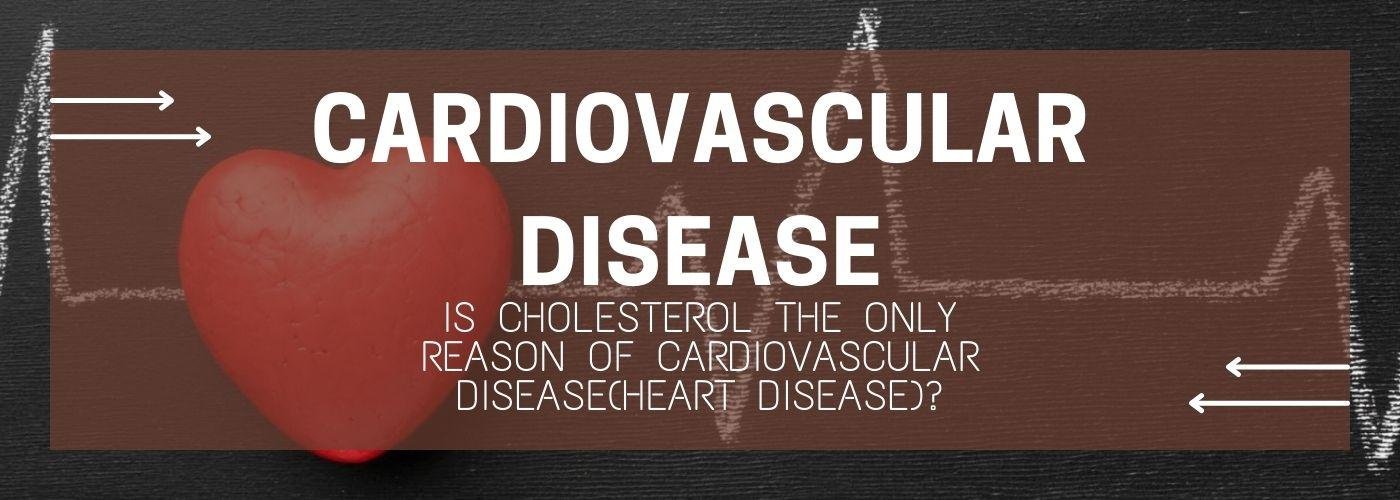Cardiovascular diseases (CVDs) are a category of heart and blood vessel illnesses that include coronary heart disease, cerebrovascular disease, peripheral arterial disease, rheumatic arterial disease, congenital heart disease, deep vein thrombosis, and pulmonary embolism. Heart attacks and strokes are two of the most prevalent CVDs.
Symptoms and Signs
During the commencement of CVD, an individual may suffer a variety of symptoms such as pain or discomfort in the centre of the chest (which may linger for several minutes), left shoulders, arms, elbows, jaw, or back. In addition, one may suffer trouble breathing (shortness of breath), nausea/vomiting, light-headedness, chilly perspiration, and a pale complexion. Women may encounter symptoms that differ from men. When compared to males, they are more prone to have chest discomfort without pressure. Furthermore, they are more likely than males to develop symptoms such as shortness of breath, weakness, exhaustion, nausea/vomiting, indigestion, palpitation, and discomfort in the upper back, arm, neck, and jaw.

The Leading Causes of Cardiovascular Disease
CVDs are primarily caused by two conditions: atherosclerosis and vascular calcification. Atherosclerosis, usually spelled arteriosclerosis, is a disease in which plaque accumulates in the arteries. The plaque is often composed of extra fats and cholesterol transported via the bloodstream. This condition deteriorated over time as plaque began to accumulate and restrict the arteries, limiting the flow of blood supply to numerous organs in the body, particularly the heart in CVDs. Over time, the plaque accumulates and completely stops blood flow, resulting in CVDs such as heart attack. Atherosclerosis is frequently connected with a behavioural risk factor, such as a diet heavy in lipids and cholesterol.

Cardiovascular Disease Risk Factors
CVDs are connected with a variety of risk factors, including hypertension, an unhealthy lifestyle, obesity, age, gender, and psychology. As high blood pressure frequently destroys the blood arteries in the heart, it is one of the most important risk factors for CVD. In a study of CVD risk factors in older populations in low and middle-income nations, hypertension was linked to angina in China, Russia, and India, and stroke in China, India, South Africa, Ghana, and Russia.
Furthermore, a poor lifestyle increases the risk of CVDs. Consumption of an imbalanced diet with high cholesterol levels and poor fibre intake is an example of an unhealthy lifestyle. High cholesterol levels, particularly low-density lipoprotein cholesterol, increase the risk of CVDs and contribute to atherosclerosis. Several studies have found a link between CVDs and a high dietary cholesterol level and a low consumption of vegetables and fruits. Furthermore, other poor lifestyle choices, such as smoking and drinking, raise the risk of CVDs. Nicotine exposure, in particular, was demonstrated to enhance atherosclerotic plaque in mouse models when they were exposed to cigarette smoke. According to one research, the chances ratio of angina in India was connected with the country’s high daily smoking rate of 46.9%.The same study found that excessive drinking on a regular basis was one of the major risk factors for angina and stroke in China, where the rate was 6.4 percent. Furthermore, physical inactivity may raise the incidence of hypertension and even obesity, both of which are risk factors for CVDs. According to reports, overall physical activity in China declined by 29 percent among males and 38 percent among women in 2009 as a result of social, environmental, and economic changes. Obesity is raising the risk of CVDs as a result of a lack of physical activity in the population. This was demonstrated in research in which obese elderly people with greater body mass index (BMI) were found to be at a higher risk of having a heart attack or stroke than those with lower BMI.
Other minor risk factors, such as age, gender, and psychological problems, may also raise the risk of CVDs. CVDs, for example, are more frequent in elderly people than in younger people. In several nations, including China, Ghana, India, Russia, and South Africa, the incidence rate of angina rose with age. According to statistics given by Malaysia’s Department of Statistics, CVDs are more frequent in the male population than in the female population. In 2009, 24.8 percent of males had CVDs, whereas only 20.1 percent of females had the condition, according to the statistics. In addition to the components mentioned above, psychological issues such as stress have been linked to CVDs. An INTERHEART research discovered that people who experienced “permanent stress” at work or at home had more than 2.1 times the chance of acquiring heart disease compared to those who did not experience stress.
Cardiovascular Diseases’ Consequences
CVDs’ effects may be classified into economic and social factors. From an economic standpoint, the economic burden of CVD is shown in the high expenses of treating CVD patients. The yearly cost of treating CVDs in Europe is projected to be over EUR 210 billion per year. Around EUR 111 billion (53 percent) of this total is related to health-care expenditures, whereas EUR 54 billion (26 percent) is due to productivity loss. The remaining EUR 45 billion (21 percent) is attributed to the expenditures incurred by informal carers such as CVD patients’ family members. The inability to recover from CVD events results in early death and diminished production, resulting in enormous expenses. Because patients require time off to recuperate from CVD surgery and sickness, the expenses for productivity loss are typically considerable. This results in income loss for patients and decreased productivity for employers, resulting in a net economic loss.
CVD has a societal impact on the patients’ quality of life. This is because CVD patients may encounter symptoms that make it difficult for them to maintain a high quality of life. Patients with chronic heart failure have been documented to have a variety of physical and mental symptoms such as chest discomfort, shortness of breath, light-headedness, and sadness, which limit their everyday social and physical activities. This has a negative impact on one’s quality of life. A study of 205 individuals with congestive heart failure and systolic dysfunction found that those with inferior cardiopulmonary function had considerably lower quality of life than those with robust cardiopulmonary function.
Cardiovascular Disease Prevention
Because of the negative consequences of CVD, it is critical for individuals to avoid CVD before it develops. Because individuals have little control over their age or gender, CVD can be avoided by lowering the disease’s risk factors. One can begin by lowering stress and increasing one’s quality of life. Those who are under psychological stress should share their burden with their family and friends. They might also engage in various activities to alleviate tension.
In addition, one might live a healthy lifestyle by engaging in regular physical activity, avoiding smoking, limiting alcohol use, eating a well-balanced diet, and ensuring enough nutrient intake. Individuals are urged to exercise on a daily basis in order to regulate their body weight and maintain an ideal BMI (20 – 25). Individuals should engage in 150 minutes of moderate intensity aerobic exercise each week (e.g., walking and light gardening work) or 75 minutes of intense aerobic activity (e.g., running and swimming). Individuals are also recommended to quit smoking since it is the single most cost-effective strategy in CVD prevention, with benefits visible within months after quitting. The National Institute for Health and Care Excellence (NICE) recommends limiting alcohol intake to no more than four units per day for males and three units per day for women.

Individuals must have a balanced diet that is low in salt and saturated fats and high in vegetables and fruits to lower their risk of CVD. This is indicated in the American Heart Association’s Dietary Approaches to Stop Hypertension (DASH) diet (AHA). The diet has been demonstrated to be an effective way of lowering blood pressure and low-density lipoprotein cholesterol levels, both of which are risk factors for CVDs. NICE, on the other hand, recommends limiting saturated fat consumption while boosting consumption of monounsaturated fatty acids and five servings of fruits and vegetables each day. The organisation also recommends a high-fiber diet with two servings of fish each week. Furthermore, for those with coronary heart disease, the AHA advises 1 gramme of mixed eicosapentaenoic acid (EPA) and docosahexaenoic acid (DHA) daily.
Consuming heart-healthy meals and LIVEON is essential for preventing heart disease. It is a preventable cause, and don’t forget to ingest additional antioxidants to maintain optimal heart health. Love yourself, and especially your heart!
